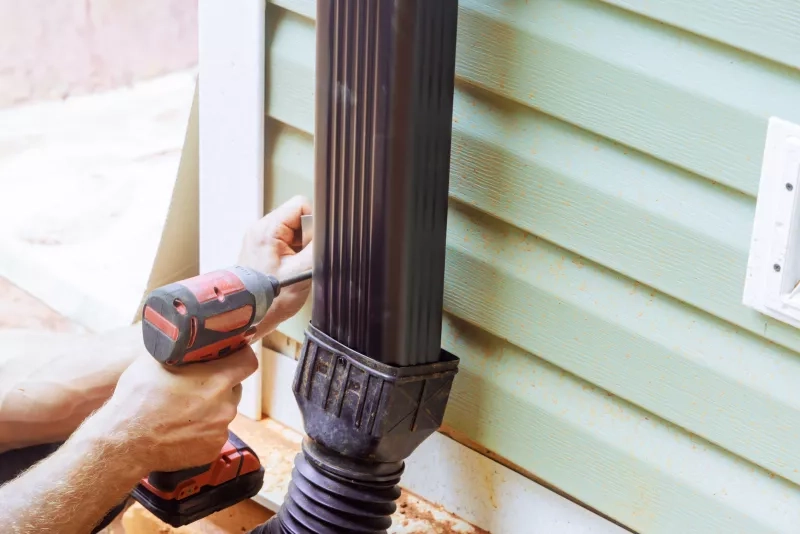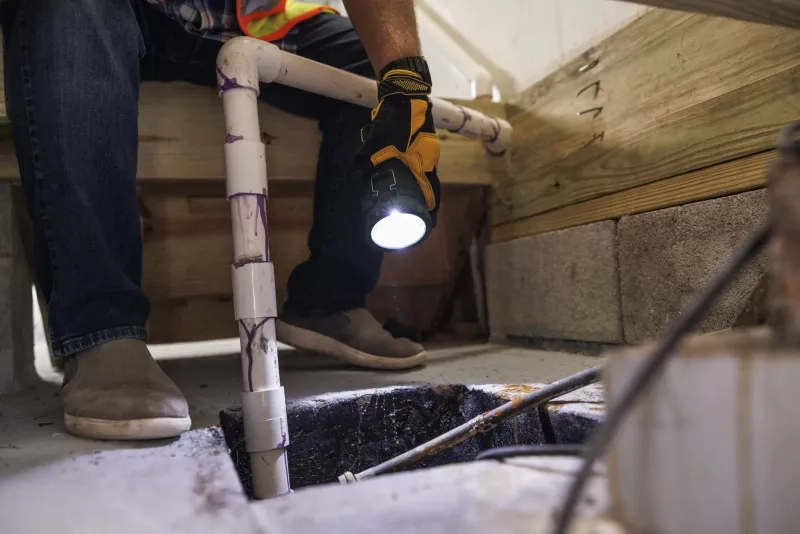
Flood protection tips every Canadian homeowner should know
2 Minute Read
Flooding isn't limited to homes near rivers or lakes—it can happen anywhere, putting your property at risk. It's a common misconception that only waterfront homes face flood dangers. The reality is that sudden downpours, melting snow, or overwhelmed drainage systems can cause significant damage, particularly to basements.
The good news is that you have the power to protect your home. Preparedness starts with knowing how to take action through regular preventative maintenance to lower the risk. Here are some key steps to protect your home against flooding.
Seal cracks in your foundation
Cracks in your foundation walls or basement floors are common water intrusion culprits. They can form due to shifting soil, temperature changes, tree roots, or poor construction. Leaving these cracks unsealed can lead to water damage and structural problems over time. To prevent this, inspect your foundation regularly and seal any cracks. Minor issues can often be repaired from inside your basement. If needed, work with a professional to manage external repairs or excavation.
Check your downspouts
Downspouts are crucial in directing water away from your home. They must extend at least 1.8 meters from your foundation to keep water from pooling near your base. If your downspouts empty water across solid surfaces like driveways, the risk of re-freezing or improper absorption increases. Additionally, ensure your downspouts do not direct water onto your neighbor’s property.
Downspout extensions provide a practical way to channel water toward lawns or gardens, ensuring safe and efficient dispersion. However, check local regulations, as some municipalities may restrict connecting extensions to underground drainage systems.
Grade your property
The grading of your property plays a crucial role in directing water flow around your home. Ideally, the ground should slope away from the foundation. If the slope directs water toward your house instead, re-grading the soil with stable materials like clay can provide an effective solution. Redirecting water flow will prevent pooling around your property and reduce the risk of damage during heavy rain or snowmelt.
Safeguard low-level windows
Basement windows located near the ground are hotspots for water seepage. Installing window wells with tight-fitting covers can block rain and floodwaters from entering. Make sure the bottom of the well sits at least 15 cm below the window, and fill the window well base with gravel or sand to improve drainage.
Schedule regular plumbing inspections

Your plumbing system plays an integral role in flood prevention. A certified plumber can check your home for potential weak spots and recommend upgrades. Here's what they might look for:
-
Weeping tiles: Older homes may lack this foundation drainage system, or the pipes may be clogged or damaged. Installing new ones or maintaining older systems can prevent water buildup near your home's base.
-
Sump pumps: An operational sump pump is essential if your basement is prone to water buildup or flooding. This device helps redirect water away from your home and is a key safeguard in high-risk areas.
-
Backwater valves: Sewer backups are an often-overlooked flood risk. A backwater valve prevents sewage from flowing back into your home during heavy storms. Check with your municipality—many offer rebates to help cover installation costs.
-
Sewer laterals: These underground pipes connect your home to the municipal sewer system. Debris, like grease and fats, can clog them, or they can degrade over time. Plumbers can use cameras to inspect their condition and clear obstructions if necessary.
Why proactive maintenance matters
Flooding isn't just a concern for stormy seasons—it can strike anytime. By taking these preventative measures, you can reduce the likelihood of damage, save on repair costs, and gain peace of mind. However, you don't have to tackle these tasks on your own. Professionals with the right expertise and equipment can assist in safeguarding your home.
For more articles and resources about flooding and protecting your home, visit https://caaneo.ca/floods/.

